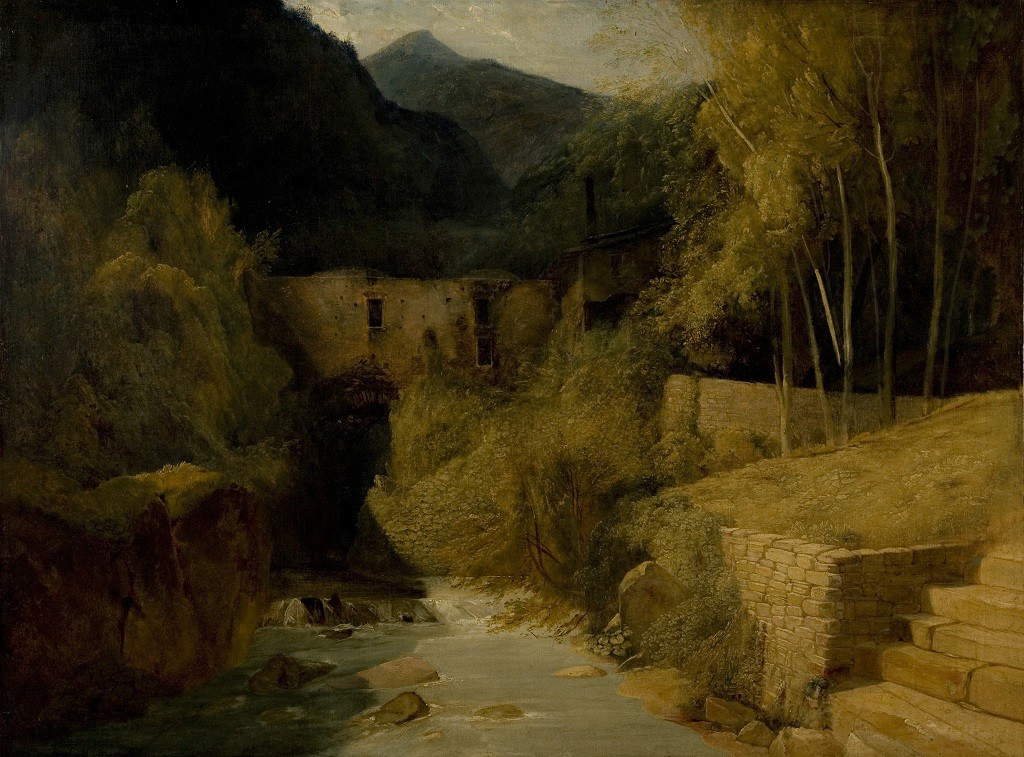A valuable painting by Carl Blechen (Cottbus, 1798-Berlin, 1840), a leading figure in German Romanticism, and which had been seized by the Nazis from two Jewish art collectors, is finally returning to its rightful owners, in accordance with the “Washington Principles” of returning works seized from Jews by the Nazis. Indeed, the German government, through the Kunstverwaltung des Bundes, or Federal Arts Administration, has returned Carl Blechen’s painting The Valley of the Mills in Amalfi to its heirs. The painting belonged to Berlin Jewish art collectors Arthur and Eugen Goldschmidt, who committed suicide in 1938 following numerous anti-Semitic persecutions. The work has a peculiar history, because the painting was purchased by Adolf Hitler himself, who wanted to destine it for the Führer’s Museum that was to be built in Linz , Austria (the organization set up by Hitler that dealt with the seizures was in fact called Sonderauftrag Linz, or “Special Order Linz”).
After Arthur and Eugen Goldschmidt committed suicide, their extensive art collection initially remained in their Berlin apartment, where it was confiscated by the Gestapo in July 1942 on the basis of anti-Jewish legislation. The rightful heir Edgar Moor, grandson of the Goldschmidt brothers, who was living abroad, was thus dispossessed. The painting’s history has been revealed by provenance research conducted by the Federal Arts Administration and the OFP project at the Brandenburg State Central Archives, funded by Department of Culture Minister Claudia Roth.

Responsible for the sale of the assets stolen from the Goldschmidt brothers was the Vermögensverwertungsstelle (“Office for Asset Realization”) of the Oberfinanzpresident (chief finance president) of Berlin-Brandenburg. It was probably through this office that Blechen’s painting entered the collection of Hitler’s “Special Order Linz” on September 5, 1944, through the mediation of Berlin art dealer Hans W. Lange. In 1960 the work became federal property, and was also recently displayed at the Fürst Pückler Museum in Cottbus, following a loan from the federal government.
In addition to the Blechen painting, the Goldschmidt brothers’ estate included a valuable art collection. An inventory drawn up in 1939 when the will was executed lists more than 900 items: in addition to Dutch paintings from the 17th century, there are French and German paintings from the 19th century, rare pieces of graphic art, sculptures that cannot be dated in more detail, and some East Asian objects and numerous decorative porcelains are also recorded. In addition, according to the expert report, the apartment was furnished with French furniture in the 18th-century style and valuable carpets and tapestries from 17th-century Brussels workshops.
“Coming to terms with the Nazi theft of cultural property is an important moment to remember those persecuted by National Socialist tyranny,” says Culture Minister Claudia Roth. “With the return of Carl Blechen’s painting, which was confiscated due to Nazi persecution, the fate of Arthur and Eugen Goldschmidt as well as Edgar Moor now becomes a little more visible. For this I sincerely thank the entire research team of the Federal Arts Administration and the OFP project.”
“I am delighted that the collaboration between the Federal Arts Administration and the OFP project, jointly funded by the Federal Commissioner for Culture and Media and the Ministry for Science, Research and Culture of the State of Brandenburg, provided the necessary information at the Central State Archives of Brandenburg and thus made the return of the painting possible,” says Christoph Faden, director of the Federal Arts Administration.
Andrea Enderlein, representative of the claimant for the return in Moor, emphasizes, “The return of the artwork is of great importance to the family and its history. My client is very grateful for the recognition that this art theft was the result of the persecution against brothers Arthur Goldschmidt and Eugen Goldschmidt.”
“I am delighted for my colleagues in provenance research that their sometimes complex and time-consuming research and transmission of information to the Federal Arts Administration,” says Julia Modelhawer, department head at the Central State Archives in Brandenburg, “helped determine the fate of the painting and the relative fate of persecution of its Jewish owners. The return of the painting is an important step in the spirit of the Washington Principles.”
 |
| Hitler wanted this painting for his museum. Now it goes back to its rightful owners |
Warning: the translation into English of the original Italian article was created using automatic tools. We undertake to review all articles, but we do not guarantee the total absence of inaccuracies in the translation due to the program. You can find the original by clicking on the ITA button. If you find any mistake,please contact us.